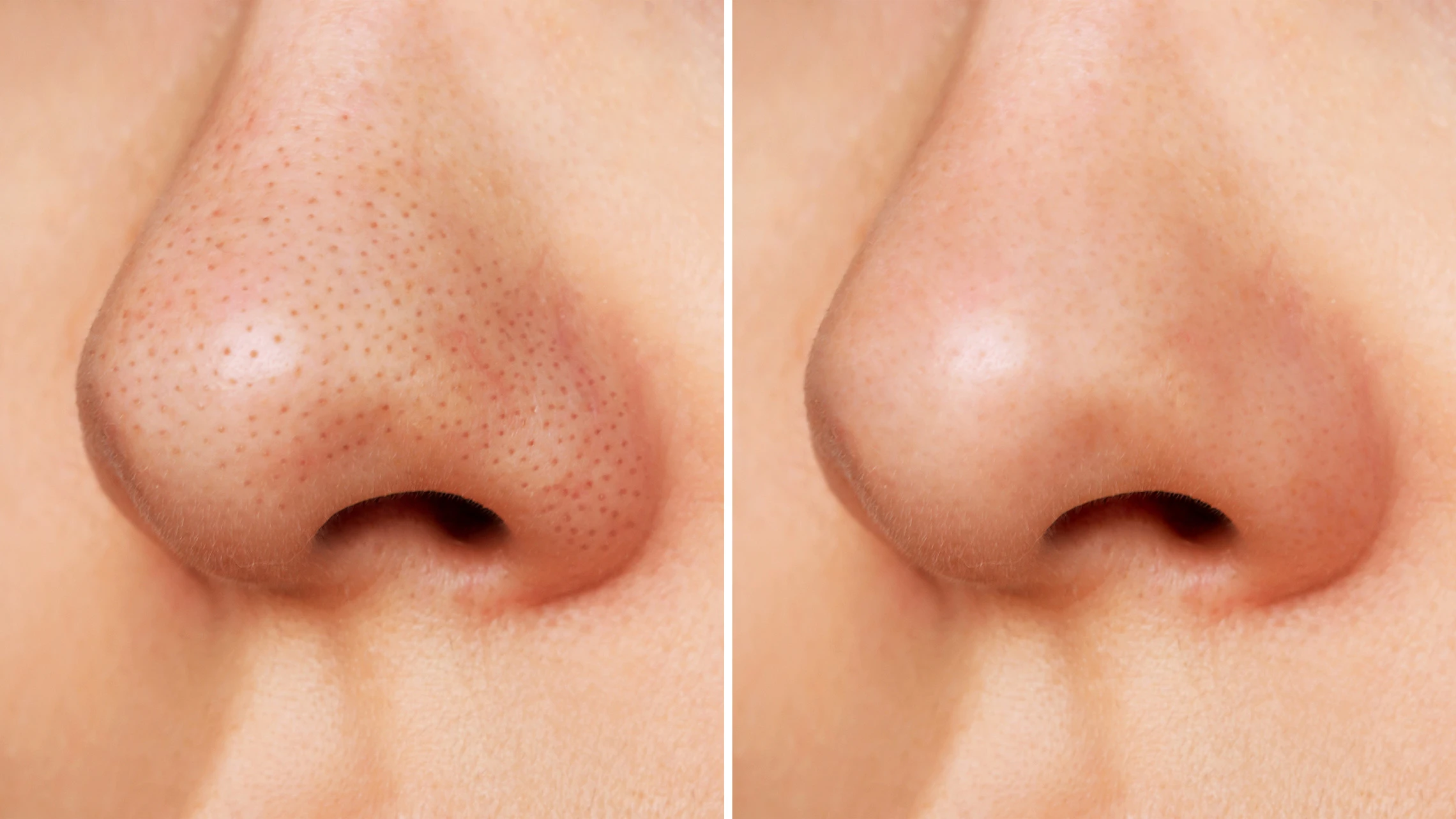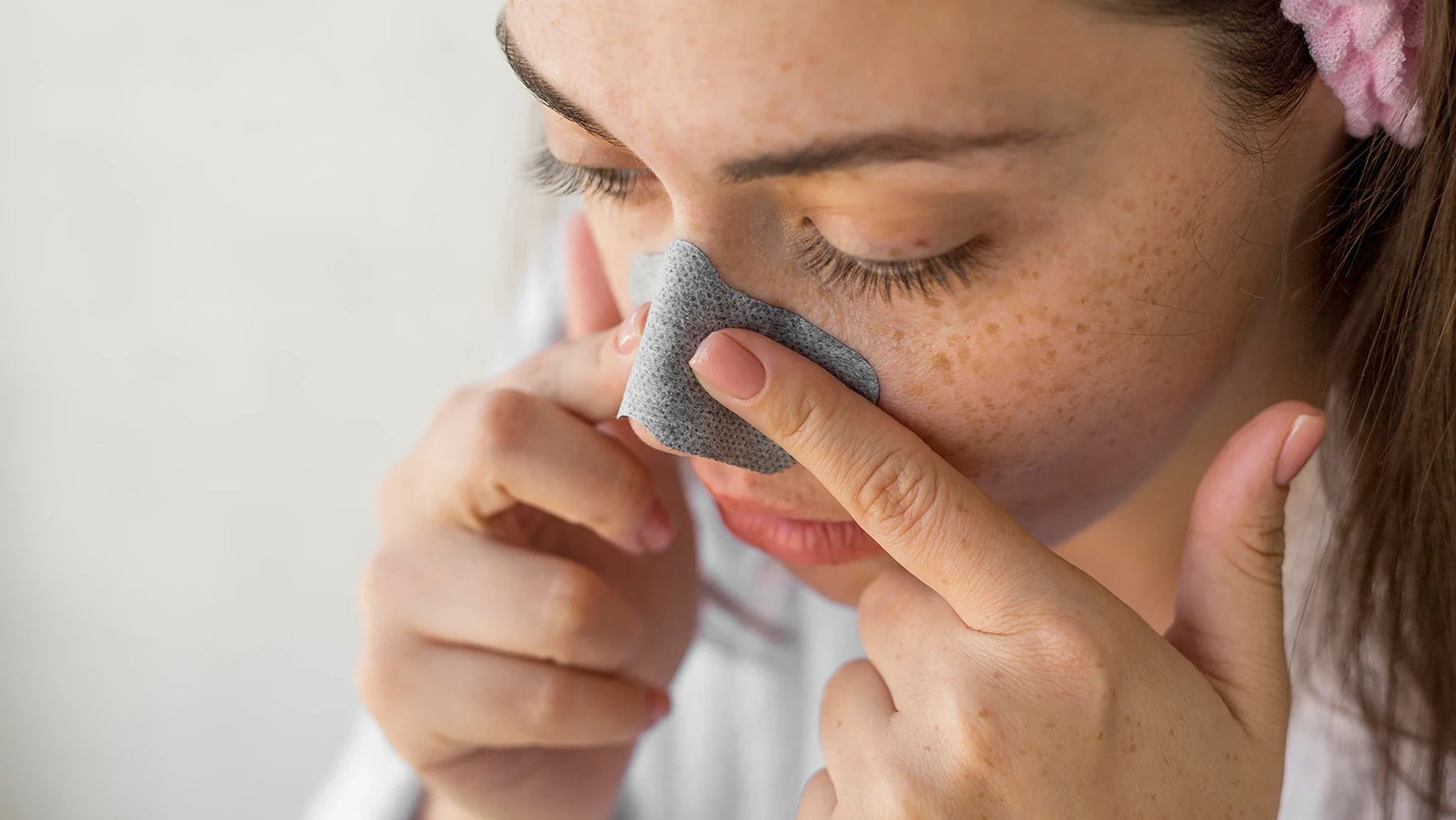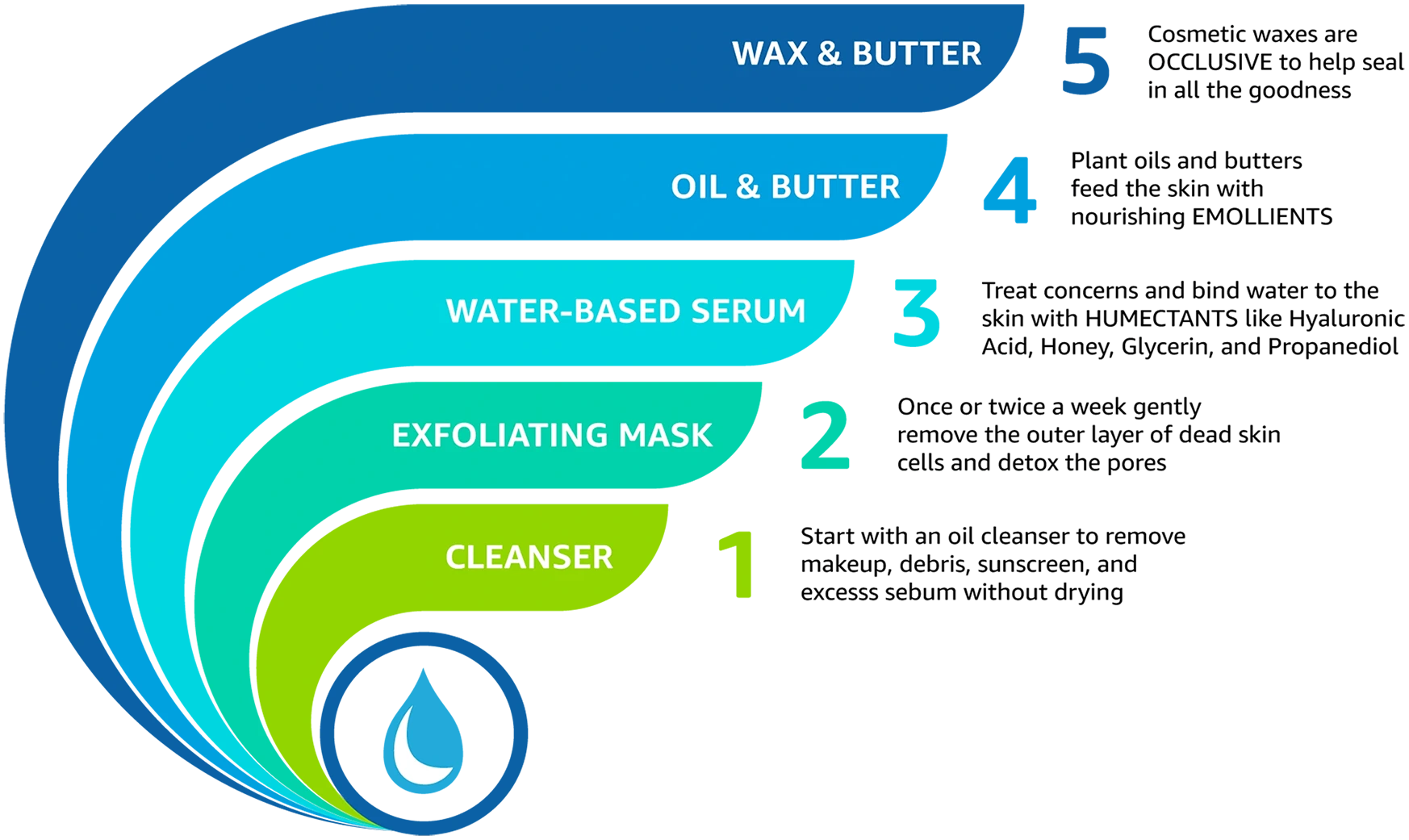
Blackheads form when excess oil and dead skin cells accumulate on the surface of the skin, attach to the hair follicles and mix with bacteria. If the plugged pore (comedone) is open and exposed to the air, the material in the pore oxidizes and appears black, brown, or red. Although blackheads are common on the face, especially the nose, they can also form on other parts of the body, such as the chest and back.
I recommend approaching blackheads in two stages:
The following procedures can help clear pores with blackheads.
OPEN THE PORES
To expand pores, wet a washcloth in very warm water. Wring out excess water and place the cloth on the area for a few seconds. (If the water is too hot for your fingers it’s too hot for your face!) When the cloth cools, warm it again and repeat the procedure for about 2 minutes.
GENTLY PULL OUT THE BLACKHEADS
WHAT NOT TO DO
Homemade masks have gained popularity, but some masks can do more harm than good. We don’t want to remove blackheads, yet create dryness, sun sensitivity, or irritation. Avoid the following commonly recommended ingredients:


The following routine can help to keep pores clear without using harsh chemicals like benzoyl peroxide or salicylic acid.
1 — CLEANSE
Use gentle cleansers to remove dirt and impurities from your skin without damaging the natural oils. Oil cleansers effectively remove makeup, sebum, and sunscreen that can clog pores. They are also great for oily skin because they gently dissolve excess oil. Harsh cleansers can actually cause the skin to produce more oil as a response to stripping the skin of too much natural oil.
2 — DETOX & EXFOLIATE
Once or twice a week, use a clay mask to smooth skin, detoxify, and absorb excess oil. Use clays that are gentle and less drying, such as kaolin and illite. Corum Barrier Repair Manuka Mud includes these clays, hydrating xylitol and honey, calming oatmeal, and exfoliating plant enzymes to help keep pores clear.
3 — HYDRATE & CLEANSE
Follow oil cleansing or the weekly exfoliating mask with a hydrating, gently exfoliating cleanser to remove invisible debris and pollutants that can disturb the skin’s microbiome and clog pores. Corum Superfruit Hydrating Cleanser keeps pores clear with a very gentle cleanser, hydration-locking hyaluronic acid and Manuka honey, and natural fruit enzymes to gently remove the outermost layer of skin cells.
4 — MOISTURIZE
Adding certain plant oils to your skincare routine can help balance the skin microbiome and keep pores from clogging. Choose plant oils that nourish and moisturize without clogging pores: oils that are high in Linoleic Acid or Eicosenoic Acid like jojoba oil, argan oil, or meadowfoam oil. The oils in Corum products have been carefully chosen to include the best plant oils for the skin. Our products are formulated to support skin barrier repair while not causing breakouts or clogging pores. That means our products are beneficial for all skin types, even acne-prone or oily skin.
5 — ZAP ZITS
Apply Corum Zit Zap Spot Stick as soon as you notice a blemish forming. Keep it covered with Zit Zap until the zit disappears.
A closed comedone, or whitehead, appears as a small white bump because the plug is not exposed to air. Closed comedones are a form of acne that is not inflamed.
Use our recommended skincare routine for acne and oily skin to clear whiteheads and keep pores clear.
Be patient, as closed comedones can take several weeks or even months to fully clear. With consistent treatment and a good skincare routine, you can help prevent future breakouts.
Please note that small white bumps on the skin may not actually be closed comedones. The bumps may be Malassezia Folliculitis, often called “fungal acne” because it is caused by a fungal overgrowth rather than by bacteria. These two conditions must be treated differently.